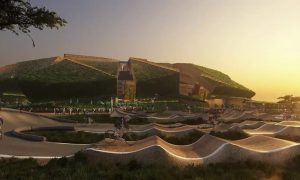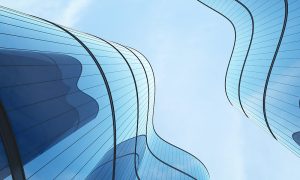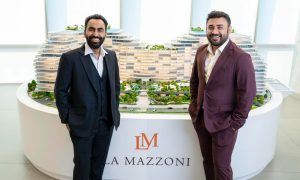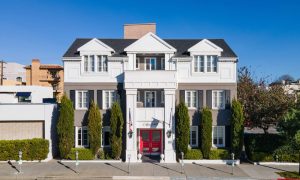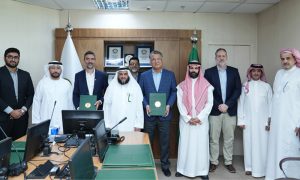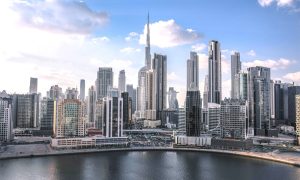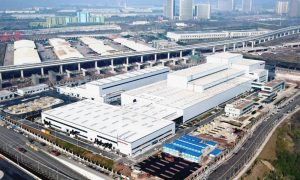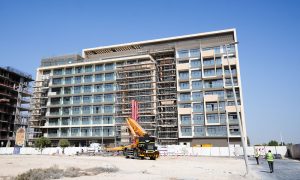Beyond luxury
Interior designer for Best Interiors, Johann Kruger, explains how to break out beyond the niche and the value of hard work

As far as business plans go, luxury in the Middle East seems a fairly safe bet. But when your core market experiences a crash and need replaces want, it soon becomes necessary to broaden horizons.
“It’s always very difficult to get your first chance at something you haven’t done before,” says Best Interiors’ Johann Kruger.
“The challenge is actually breaking beyond your niche market, because the minute somebody likes your approach and they have the faith and courage to give you a shot, that is it. From there on if you can prove yourself the door is open. You work and work and don’t look back,” he adds.
For Best Interiors that break came with the contract for Marina 23; a 93 storey residential tower project located at Dubai Marina, to which Best Interiors was introduced as the interior designer of choice by the project’s architect.
Once assigned to the project, three fully customisable pre-designed packages were created for the 48 duplex apartments in the tower – which all have private pools – and the show apartment. It was through the show apartment design that demand then saw the company approached to help buyers of the smaller, single storey, apartments; many of whom were buying a second property or holiday home and therefore could not commit to their own fit out project.
From there, the project’s ‘grandeur’ and ‘investor’ packages were put together, ranging from a customised small apartment design to furniture and fabrics only.
“We have done high end luxury residential palaces, private yachts, private planes, all things associated with royalty, in a market few can afford, but we are now tailoring solutions to a market that isn’t so high end and maybe just wants to fit out a second home in the region,” Kruger explains.
“It’s about making luxury a little bit more accessible, but at the same time not compromising the chance to get involved in larger projects,” he adds. As the portfolio continues to diversify, other projects currently include large office developments in Qatar and residential and hospitality projects in India.
With one finger remaining firmly on the luxury pulse, the higher end of the current portfolio includes a VIP residence in Fujairah; a high end residential project in Thailand; and an architecture, interior design and landscaping project Kruger describes as a “very exclusive villa” in Angola. “The work in your portfolio shows your diversity and we want to set ourselves apart,“ he asserts.
“I see challenges everywhere but I don’t shy away from them. We have been able to break into a market with which we have no previous association, for example changing our majority clients from high luxury residential and palaces to corporate hotel developments and high rise buildings,” he adds.
Reaching out
Beyond the diversity in target project budgets comes a diversity in commercial focus, which will be operated under a newly established umbrella company Best Networks.
“We are assuming that sooner or later we will branch out beyond interiors, into for example into architectural consultation and maybe our own line of custom made branded furniture for hotels. Then it’s good to have a mother company over those brands,” Kruger says of the initiative.
In line with the market expansion comes a geographical expansion and with even more projects in India, the far east and north Africa, Best Interiors has established one office in Delhi and will support this with another in Mumbai.
“When the economy went south it filtered out a lot of people who didn’t want to ride out the storm. When I came to Dubai 12 years ago it was the only city in the world where even bad designers could get work, but the people who are here now are the strong design firms and for that reason they are bringing the cream of design talent to the UAE.
“In addition people are capitalising on the fact that while previously they may have been able to get a better deal from somebody else, the quality of the product would have been sub-grade,” Kruger observes.
“They are still tight on budgets, but they know that any one of the designers in the UAE that is still here will provide a substantial product that is worth their money,” he adds, saying the melting pot of talent currently in the market has changed the mentality of design.
“I think the eyes of Dubai have been opened up to world-wide design trends and what is considered to be on the cutting edge globally,” Kruger adds.
Design quality
Citing the main lifestyle influences on design as technology, local culture and sustainability, Kruger predicts the sector’s future success will depend on how much and how well innovation can be integrated into a project, as well as how projects can be designed into their Middle Eastern surroundings, rather than contradicting them.
“It’s the nature of the beast. Design is definitely moving more towards modern technology, not so much for the fact that it’s a design trend, but it’s a comfort trend. Technology I would say is always going to be at the forefront of design and it will shape the future of it,” he says.
Predicting that locally developed design trends will soon spread beyond the region, Kruger says this will all depend on the continuation of a trend that is seeing local students nurtured to study the arts as much as they are sciences.
“What is happening here is something that hasn’t been seen before and it hasn’t been duplicated that much either.
“Sooner or later the Middle East will become the hub of design and architecture for the world.”
“We have good overseas talent and I feel the UAE is investing a lot into cultivating an ambition among the young people to study the arts as well as sciences and that is the best way to infuse the local essence and culture into the design,” he adds, concluding: “As the markets start recovering now and confidence comes back in regards to building, development and decoration, I think things will only become even better than they are now.”


